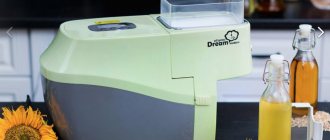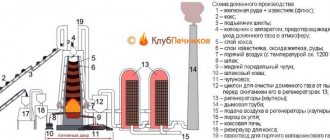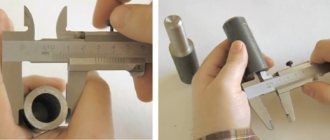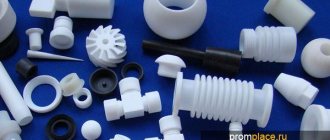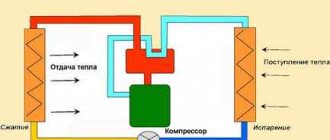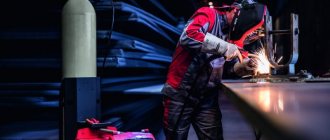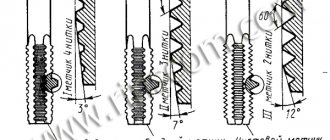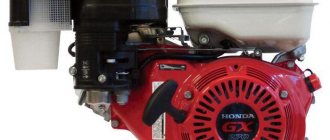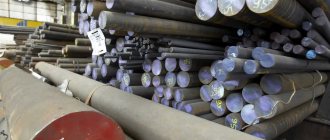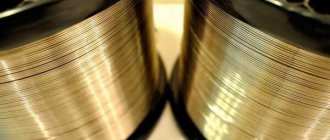The main goal of entrepreneurial activity is to make a profit with relatively small investments. The production of vegetable oils as a business idea is perfectly suited for a businessman who wants to open his own business in a sought-after area.
Vegetable oil production as a business strategy
In Russia, about 50% of oil is produced in medium-sized or even small (home) enterprises and factories. This statistics is due to the small costs of the entrepreneur in the early stages of running a business producing oils of vegetable origin and quick payback. Volumes can be limited only by the amount of initial raw materials that the company is able to purchase.
How profitable is it today to invest your capital in the production of vegetable oil? What equipment will be needed at the initial stage of production and how much will it cost?
Characteristics of raw materials and products
The raw materials for the production of vegetable oils are mainly sunflower seeds. The sunflower fruit is an elongated wedge-shaped achene, consisting of a peel (husk) and a white seed (kernel), covered with a seed coat. The husk accounts for 22...56% of the total mass of the achene. The oil content in sunflower seeds is more than 50%, and in the peeled kernel it is about 70%.
The composition of vegetable oils obtained from sunflower seeds includes 95...98% triglycerides, 1...2% free fatty acids, 1...2% phospholipids, 0.3...0.1% sterols, as well as carotenoids and vitamins. Sunflower oil contains 55...71% linoleic and 20...40% oleic acids.
Benefits of vegetable oil production
More than 40% of the total production of sunflower oil in the Russian Federation falls on medium and small businesses. The cost of entering the market is relatively low, which allows even successful farms to organize the manufacturing process. Despite high competition, the demand for vegetable oil is quite high, and the situation is developing towards increasing market demand for these products.
Even if there is no possibility of sales on the domestic market, it can always be sold abroad (Europe, Turkey), where there are no difficulties with sales. The options for using vegetable oil are quite varied and are not limited only to cooking. It is used in industries such as:
- paint and varnish industry (solvents, oil paints);
- production of cosmetics and medicine (creams, ointments);
- soap making;
- canning industry.
Another positive quality is waste-free production. Sunflower seed husks, obtained by hulling (cleaning), are used for the manufacture of building materials and as raw materials for heating briquettes and pellets. After processing, cake and meal can be used as a valuable feed additive in livestock farming.
In addition, the costs of processing all waste (loading, transportation, storage) in the financial statements are included in the cost of the final product, that is, they are carried out as an expense part, and not as a profitable one. This allows for some tax optimization.
Features of the technology
The technology for the production of vegetable oils in small enterprises includes the preparation of sunflower seeds for storage, separation and grinding of the kernel, hydrothermal treatment of mint, pressing, cleaning, packaging and storage of the finished product.
Preparing seeds for storage . After harvesting, sunflower seeds are stored for storage with a moisture content that exceeds the optimal values for storage and technological processing. The most common method of reducing the moisture content of sunflower seeds before storage is heat drying, during which the seeds are heated using a drying agent (usually a mixture of air and flue gases). The drying agent at a temperature of 300...350 °C moves in the dryer towards the seeds, the moisture content of which decreases by 10...12%. The dried seeds are cooled and sent to a bunker.
Core separation . A feature of this operation is the separation of seeds by geometric size into large and small fractions, as well as the separation of impurities that differ from the main crop in aerodynamic and ferromagnetic properties.
The separation of the shells from the kernel consists of the operations of destroying the integumentary tissues of the seeds - hulling and subsequent separation (winnowing) of the resulting mixture - crushed eggs into the kernel and husk (husk). The most important requirement for the caving operation is to maintain the integrity of the core. The rotors of crushing machines rotate at a rotation frequency of 35...40 s–1, collapsing occurs due to a single directed impact along the major axis of the achene.
The division of rushanka into husk and core is based on the difference in their sizes and aerodynamic properties. Therefore, first, Rushanka fractions are obtained containing husk particles and kernels of the same size, and then, in an air flow, Rushanka is divided into husks and kernels. This method of separating Rushanka is used in aspiration Rushan-fan machines.
Kernel crushing . To extract oil from seeds, it is necessary to destroy the cellular structure of their tissues. The end result of the grinding operation is the transition of the oil contained in the seed cells into a form available for further technological operations. The resulting mint has a large specific surface area, since in addition to the destruction of cell membranes during grinding, the intracellular structure of the oil-containing part of the cell is also disrupted. A significant proportion of the oil is released and immediately adsorbed on the surface of the mint particles.
Well-chopped mint should consist of particles of uniform size passing through a sieve with holes 1 mm in diameter, should not contain whole, undestroyed cells, and at the same time the content of very small particles in it should be small. To produce pulp, small enterprises use roller machines with a roll diameter of 600 mm and a rotation speed of 5.0 s–1.
Hydrothermal treatment of mint . The purpose of this operation is to weaken the surface forces that hold the oil on the mint particles. At mini-enterprises, pulp preparation is carried out in two stages. The first is moistening the mint to 8...9% and heating it to a temperature of 80...85 °C, which promotes uniform distribution of moisture in the mint and partial inactivation of hydrolytic and oxidative enzymes of the seeds, which deteriorate the quality of the oil. The second is heating the mint to 105 °C and drying it to a final moisture content of 5...6%.
Pressing pulp . It is carried out in screw presses that develop a pressure of about 30 MPa and a degree of pulp compaction of 2.5...3.0. During the pressing process, cake is obtained with an oil content of 15...17% and vegetable oil.
Vegetable oil purification . The operation consists of removing solid mechanical impurities and suspensions from vegetable oil.
Filling and packaging. Vegetable oil is packaged in transparent plastic containers, sealed and labeled using capping and labeling machines. In some cases, packaging of plastic containers in shrink film is used. Packaged and packaged products are sent for storage and sale to the retail chain.
Although there are certain advantages, the technology of well-known butter factories has a number of disadvantages. The main one is the increased residual oil content of the pressed material, which reduces the oil yield. The presence of a large amount of husks in the oilseed material due to the absence in some cases of the hulling operation, the lack of special preparation or harsh regimes for frying the mint before pressing leads to the production of low-quality vegetable oil.
Castor
Cold-pressed castor oil is extracted from the castor bean plant. In appearance, it has a light yellow tint that does not form a film and does not dry out. It has a number of valuable properties. It is very often used in cosmetology, as it perfectly nourishes, moisturizes and protects the skin, smoothes wrinkles and prevents premature aging. It has excellent whitening properties and helps in the fight against freckles. Cold-pressed oil also wonderfully cares for hair, gives it shine and strengthens it. Well stimulates the growth of eyelashes and eyebrows, an indispensable remedy for dandruff.
Used for deep cleansing of the gastrointestinal tract. It is considered the simplest assistant for weight loss, as well as for improving metabolism.
Organization and principles of operation of technological equipment complexes
The machine and hardware diagram of the equipment complex for a low-capacity plant for the production of vegetable oil is shown in Fig. 1. The complex consists of a sieve separator 1, a elevator 2, a magnetic separator 3, a crusher-winter machine 4, a roller machine 5, screw conveyors 6, 7, 11 and 13, bunkers for mint 8 and husks 9, respectively, roasters 10, auger grain press 12, tanks 14 and 15 for crude oil, tank 16 for purified oil, pumps 16, tanks 17 for settled oil and bins for husks 18 and dust 19.
Rice. 1. Scheme of vegetable oil production
Sunflower seeds arriving for short-term storage in a silo are pre-weighed on scales, which are then conveyed by elevator 2 into sieve 1 and magnetic separators 3 to separate impurities. Impurities of plant origin separated in separators are collected and used in feed production. Then the seeds enter the dryer 20, where they are brought to the required humidity.
Further processing of sunflower seeds involves maximum separation of the shell from the kernel. This process involves two technological operations: peeling (hulling) the seeds and separating the shell from the kernel (winnowing, separation), carried out in a winnowing machine 4. In this case, three streams are formed at the output, which, depending on their composition, are sent to the next sections of the technological scheme: the first flow is non-destructive - it returns to the receiving hopper; the second flow, consisting of a kernel of sunflower seeds and husk particles, is sent to the aspiration device of the fan-fan machine 4, where the husk is carried away by the air flow; the third core stream, together with the chaff, enters the fryers 10.
After weighing on scales, the sunflower kernels are crushed on a roller machine 5. The grinding process can be carried out at one time or in two times - preliminary and final. During grinding, the cellular structure of sunflower kernels is destroyed, which is necessary to create optimal conditions for the most complete and rapid extraction of oil during further pressing.
The grinding product - mint - after the roller machine 5 enters the fryer 10, in which, due to hydrothermal treatment, optimal plasticity of the product is achieved, and conditions are created to facilitate the extraction of oil on presses. When frying, the moisture content of the pulp decreases to 5...7%, and the temperature rises to 105...115 °C.
From the screw press 12, into which the pulp is fed after the fryer, two products come out: vegetable oil and cake. Press oil is purified using frame filter presses or settling tanks.
The machine and hardware diagram of the KM-400 technological equipment complex for the production of vegetable oil with a capacity of 400 kg/h is shown in Fig. 2. The complex consists of a dryer 1 K4-US2-A, a separator 2 B6-MSA-1, a blower machine 3 B6-MRA-1, a roller machine 4 B6-MVS, two braziers 6 and a hydraulic press 5.
Rice. 2. Machinery diagram of the KM-400 technological equipment complex for the production of vegetable oil
First, seeds from the warehouse are fed into separator 1, designed to separate impurities that differ from the main crop in linear dimensions, aerodynamic and ferromagnetic properties using a system of moving sieves, a blower fan and permanent magnets.
Then the cleaned sunflower seeds enter the crushing machine 2 to separate the seed kernels from the husk by passing the seeds between the rotating whip drum and the corrugated surface of the stationary decks, followed by sifting them through a sieve.
The separated husks are used to fire roasters 5, intended for hydrothermal processing of mint.
After this, the mint is sent to a roller machine 3 to grind it before pressing. The pulp, crushed and processed in a roasting pan, is fed into a hydraulic press 4, in which vegetable oil is separated from it.
How to choose
It must be remembered that this product at the time of production should not be subject to chemical treatment, as well as the introduction of various preservatives. The use of such supplements is very important for those who seek to improve their health and eat natural foods. Based on the above, when choosing, you must be guided by the presence of a pleasantly expressed aroma, as well as a qualitatively different taste.
For example, extra virgin olive oil, as well as products of the same production method, spoil quickly enough, this confirms their naturalness. They have sediment and good turbidity. By using such dressings in your diet, you can improve your health. When purchasing, you need to be careful, especially raw foodists, as some manufacturers can increase the manufacturing temperature to 90˚C. With this treatment, beneficial substances begin to disappear. A product that smells like burnt or burnt oil does not meet all production standards.
Leading Process Equipment
Mini-oil factories are characterized by the use of several types of equipment to implement the main technological operations of the press method for the production of vegetable oil.
The mobile dryer K4-US2-A (Fig. 3) is designed for drying sunflower seeds and consists of fans, a nozzle 3, a combustion unit 4, a bucket conveyor 6, a drying shaft 7, a hopper 8, augers 9 and 11. The dryer can be installed outdoors air at temperatures from –20 °C to 50 °C.
Rice. 3. Mobile dryer K4-US2-A
The combustion unit 4 and the drying shaft 7 are mounted on the chassis of a car trailer. Combustion unit 4 includes nozzle 3, firebox, fans, air ducts, fuel and fuel ignition systems, equipment for controlling the flame and coolant temperature. Drying is carried out with a mixture of flue gases and outside air. Dried sunflower seeds are cooled using a fan to ambient temperature.
Technical characteristics of grain dryer K4-US2-A
- Productivity, kg/h 400
- Productivity when drying sunflower seeds in relation to productivity when drying wheat, % 80
- Fuel type: diesel
- Fuel consumption, kg/h 76.5
- Individual drive of mechanisms from electric motors and gear motors
- Types of electric motors: asynchronous, closed, blown design Total installed power, kW 40
- Overall dimensions of the dryer, mm:
- in transport position 9200x2750x4000
- in working 9200x4300x5300
- Weight without grain, kg 10 200
Separator B6-MSA-1 1 (Fig. 4) is designed for cleaning sunflower seeds from impurities that differ in size and aerodynamic properties, as well as separating ferromagnetic impurities. Consists of two fans, chamber 2, sieve housing 3, set of magnets 4 and eccentric shaft with drive 5.
Rice. 4. Separator B6-MSA-1
Sunflower seeds are cleaned of impurities in sieve housing 3, passing through four sieves. The latter are driven into oscillatory motion using an eccentric shaft. Impurities sucked out by fan 1 are collected in sedimentary chambers 2. A magnetic trap 4 is installed in the lower part of the separator to remove ferromagnetic impurities from the exiting seeds. The fans and the eccentric shaft have a common drive 5.
Technical characteristics of separator B6-MSA-1
- Productivity, kg/h 400
- Cleaning efficiency, %, not less than 60
- Eccentric shaft rotation speed, min-1 462.5
- Oscillation amplitude, mm 6.5
- Installed power, kW 1.5
- Overall dimensions, mm 1550x1100x1600
- Weight, kg 490
The magnetic column BKMA 300A (Fig. 5) is designed to isolate ferromagnetic impurities from sunflower seeds. Consists of a valve 1, a frame 2, a regulating device 3, guides 4 for the product and a set of magnets 5.
Rice. 5. Magnetic column BKMA 300 A
A set of magnets 5 is made of magnets arranged with like poles in a row. Valve 1 is hinged. Guides 4 for the product are rigidly attached by the walls to the frame 2. In the upper part of the frame there are two openings for supplying the product to be cleaned and for aspiration, in the lower part there is an opening for the product exit. Sunflower seeds enter the receiving device, from where they pass by gravity along the screen in its upper part, while the purified product spills past the screen, and ferromagnetic impurities are attracted by a magnetic field to the screen.
Technical characteristics of the magnetic column BKMA 300A
- Productivity, kg/h 2400
- Overall dimensions, mm 424x332x555
- Weight, kg 23
The B6-MRA-1 hulling machine (Fig. 6) is designed for hulling sunflower seeds and separating the husks from the kernels. The machine is part of the KM-400 technological equipment complex. It consists of a fan 1, a drive 2, a hopper 3, a crusher 4, a sieve body 5. The working body of the crusher is a whip drum, rotating at different frequencies. The drum is driven by a belt drive from an electric motor.
Rice. 6. Rolling machine B6-MRA-1
The destruction of the shell of sunflower seeds occurs when they pass between the drum and the corrugated surface of the decks - cast iron plates installed between the sidewalls. The separation of the husks from the kernels is carried out on a sieve body 5, secured to an oscillating frame with four belts. The sieve body, which is a wooden frame on which two sieves are mounted, is driven by an eccentric shaft. The husk is sucked off by fan 1.
Technical characteristics of the blower and winch machine B6-MRA-1
- Productivity, kg/h 1000
- Installed power, kW 3.7
- Overall dimensions, mm 2182x1150x1415
- Weight, kg 700
The B6-MVS roller machine (Fig. 7) is designed for grinding sunflower seed kernels. The machine is part of the KM-400 technological equipment complex. It consists of a feeder 1, right and left drives 2, frame 3, rollers 4 and a mechanism for working parts (not shown in the figure).
The working bodies are rolls 4 mounted in bearings and equipped with independent drives 2 (right and left). Rotation of the rolls is transmitted using V-belts. MechaChapter 4. Equipment for the production of vegetable oil The bottom of the working bodies is designed to crush and convert seed kernels into mint. Feeder 1 provides a continuous flow of material along the entire length of the feed roller into the gap between rollers 4. The adhering product is removed from the surface of the rollers with scrapers. The upper roll is pressed using a spring device. Belt drives and the working area of the rolls 4 are covered with guards.
Rice. 7. Roller machine B6-MVS
Technical characteristics of the B6-MVS roller machine
- Productivity, kg/h 800
- Installed power, kW 8
- Occupied area, m2 1.4
- Overall dimensions, mm 1175x1120x1560
- Weight, kg 1940
The E8-MZHA fryer (Fig. is intended for moisture-heat treatment of sunflower seed mint. It consists of a drive 1, a chain transmission 2, a mixing shaft 3 and a vat 4.
is intended for moisture-heat treatment of sunflower seed mint. It consists of a drive 1, a chain transmission 2, a mixing shaft 3 and a vat 4.
Rice. 8. Fryer E8-MZHA
Vat 4 is closed with two lids, one of which has a hole for filling mint. Frying occurs due to the heat obtained during the combustion of the husks in the oven. Mixing of the mint is carried out by a stirrer shaft 3 and two rippers. Rotation of the mixer shaft is transmitted from drive 1 through chain transmission 2. At the bottom of vat 4 there is a hatch that can be closed with a valve, through which the oil mass comes out. As a rule, a fourth fryer is installed in the butter shop, designed to equalize the temperature of the product coming from the three previous fryers.
Technical characteristics of the E8-MZHA fryer
- Productivity, kg/h 500
- Installed power, kW 8
- Heating surface area of the vat, m2 1.2
- Overall dimensions, mm 2000x1500x1025
- Weight, kg 1300
The E8-MPSh grain screw press (Fig. 9) is designed for continuous extraction of oil from sunflower seeds. It consists of a drive 1, a support unit 2, a grain cylinder 3, a feeder 4 and a screw shaft (not shown in the figure).
The pulp (fried mint) is evenly fed by a screw into the grain cylinder 3, divided into four chambers and consisting of two halves connected by pins. The screw shaft moves the pulp sequentially in a cylinder from one chamber to another. Due to the pressure created by the screw shaft, the oil is squeezed out of the pulp. The oil is directed through the gaps between the grain bars into the pan, from where it flows by gravity into the oil container.
Rice. 9. Zeer screw press E8-MPSh
The cake moves from the grain cylinder to the support unit 2. The thickness of the exiting cake is regulated by a cone mechanism. The drive 1 of the screw shaft consists of an electric motor, a gearbox and a V-belt drive. The feeder auger is driven from the auger shaft through a chain transmission.
Technical characteristics of the E8-MPSh screw zeer press
- Mint production, kg/h 400…500
- Installed power, kW 11
- Overall dimensions, mm 3725x1125x1300
- Weight, kg 2920
Extruder-press EPC-75 (Fig. 10) is designed for continuous processing of unhulled sunflower seeds and squeezing oil from them according to a single final pressing scheme. It consists of an extruder press 1, equipped with electrical heating, a splitter 2 for transmitting rotation to two screw shafts at the same speed, a gearbox 3 and an electric motor 4.
Rice. 10. Extruder press EPC-75
The extruder makes it possible to obtain cake with a residual oil content of 15...20% and a moisture content of 7.5...9.0%, which significantly increases the yield of sunflower oil.
The main design features include the presence of two shafts with specially shaped nozzles placed on them with a contact-sealing profile and the presence of heated perforated sections. This provides an intensive effect on the material by combining the processes of transportation, pressing, squeezing, mixing, grinding, granulating and moisture-thermal effects.
Technical characteristics of the extruder-press EPC-75
- Extruder type horizontal, two-screw
- Productivity for sunflower seeds, kg/h 120…150
- Installed power, kW 7.5
- Overall dimensions, mm 1270x3100x950
- Weight, kg 740
The E8-MFP filter press (Fig. 11) is designed for continuous purification of sunflower oil from mechanical impurities. It consists of a pumping station 1, a support section 2, a set of sections 3 and frames 4, filter cloths 5, a pressure section 6, a frame 7 and a screw clamp 8.
Rice. 11. Filter press E8-MFP
The filter is a set of sections 3 and frames 4. Pressure 6 and support sections 2 are installed at the ends of the set. Between the frames and sections there are filter cloths 5, clamped with a screw clamp 8.
Unrefined oil from the container is supplied by pumping station 1 to the oil filter. The oil, passing under pressure through filter cloths 5, is cleaned of mechanical impurities and drained into the tray.
Technical characteristics of the E8-MFP filter press
- Installed power, kW 3
- Overall dimensions, mm 2150x940x1400
- Weight, kg 2400
Linen
Cold-pressed flaxseed oil is recommended for use in food, as well as in folk medicine and cosmetology. Its composition is simply unique and contains polyunsaturated fatty acids such as Omega-3 and Omega-6. Before purchasing this product, you should consult your doctor as there are health restrictions.
Beneficial features:
- blood cholesterol levels are significantly reduced;
- Cold-pressed oil is an excellent remedy for the prevention of atherosclerosis, therefore it makes our lives longer, as it prevents the development of strokes and heart attacks;
- contains almost all B vitamins, which have a positive effect on the nervous system;
- Vitamin E contained in the oil is an essential antioxidant;
- the product forms and improves immunity;
- helps absorb calcium;
- stabilizes fat levels;
- useful for children;
- restores the strength of athletes after a hard workout;
- recommended in the postoperative period;
- heals cuts and wounds well;
- stabilizes the endocrine system;
- helps with weight loss;
- used for diabetes mellitus, as it improves the absorption of insulin by the body.
Is it possible to fry?
Many people wonder whether it is allowed to cook food using extra cold-pressed oil? Such an action is, of course, permissible, but at this moment the ingredient loses its unique taste and aroma, as well as its positive properties. It is too healthy in its raw form for such utilitarian use. Its bright taste does not go well with all foods; for example, fish should not be cooked with it at all. Good quality oils that have a neutral taste are perfect for frying. This product undergoes special processing and is suitable for such purposes, without losing all its beneficial properties.
Recommendations
In order not to be disappointed after purchasing the chosen gas station, you need to take into account some factors. At the time of purchase, you need to pay attention not only to the expiration date, which is very short, but also to the packaging. Since the product is sensitive to light and quickly oxidizes, it should be in a dark glass container and hermetically sealed. Another important point is its storage at home under the same conditions. After the expiration date, it is better not to use it for food, because this may affect your health.
Cold-pressed oil is much more expensive than products that have undergone chemical purification and processing, and therefore you can be sure that manufacturers monitor the quality of their goods and control the presence of counterfeits.

